Let us begin with a simple question:
What is reality?
I’ll bet that you’ve spent hundreds of hours agonizing over this question, wringing your hands and banging your head against the wall. Even so, I’ll bet you never thought of it in terms of this distinction:
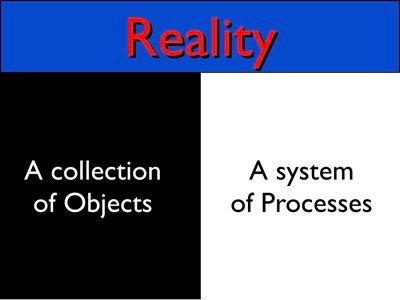
Is reality a collection of OBJECTS or a system of PROCESSES? Yet this distinction is fundamental to the nature of the universe. It shows up over and over in every field of intellectual inquiry. For example:
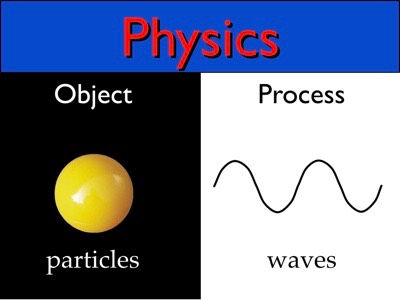
Physics recognizes two fundamental components of the universe: particles and waves. Particles are objects like neutrons, protons, muons, quarks, and so on. Waves are processes like light: X-rays, gamma rays, light waves, radio waves, and so on. Here’s another example:
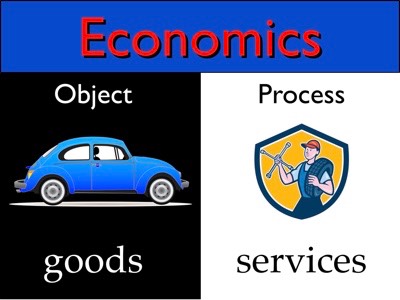
Economics recognizes two fundamental components of every economy: goods and services. Goods are objects; services are processes. Now let’s move on to computer science:
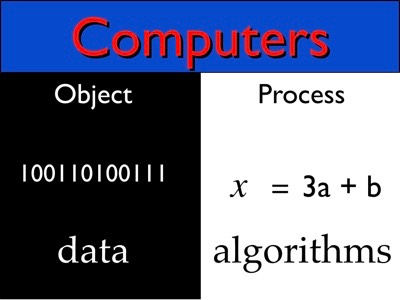
Every computer uses algorithms to process data, which are objects. Indeed, the central component of every computer is the Central PROCESSING Unit. The examples keep piling up:
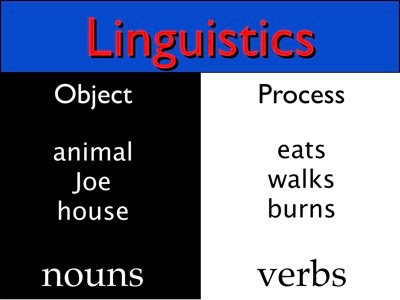
There are two fundamental kinds of words: nouns and verbs. Nouns specify objects and verbs specify processes. Every sentence must contain at least one noun and one verb. Isn’t it interesting that, at the very core of language is a pairing of Object with Process? I’m not done yet:
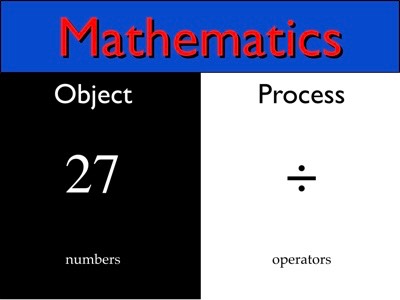
Mathematics has two fundamental components: numbers and operators. Operators are like algorithms: they process numbers. One last example:
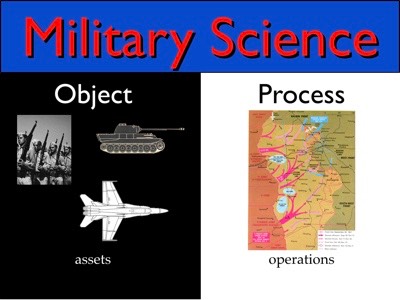
Military people talk about assets and operations. Assets are Objects like soldiers, tanks, and airplanes. Operations are Processes by which the assets move around and fight.
Thus, reality is a combination of Object and Process:
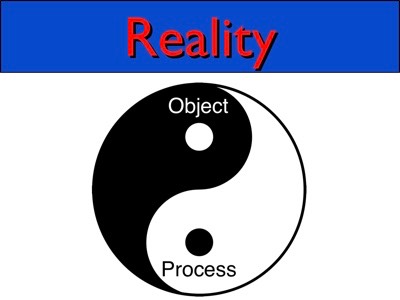
Object and process are the yin and yang of reality. Together they constitute reality. But there’s an interesting catch:
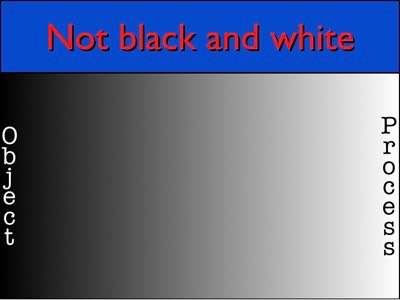
Object and Process are not black and white. They blur together in ways that can become quite confusing. This was first noticed when physicists started trying to figure out quantum mechanics.
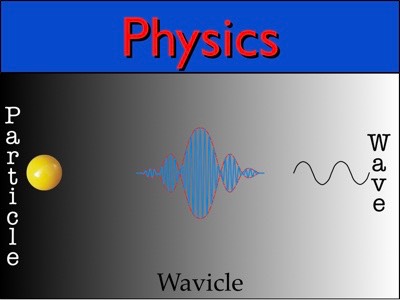
Physicists had always thought that light was a wave, but then Einstein came along and showed that it could also be a particle. Einstein didn’t say that it was not a wave, he just said that, in some circumstances, it acted more like a wave. A few years later, another physicists showed that electrons, which are particles, would sometimes act like waves. Thus, everything is partly particle and partly wave. The more energy it has, the more like a particle it is.
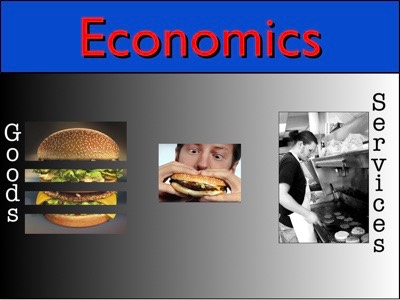
The same thing happens in economics. We have goods and services, right? So when you buy yourself a Big Mac, are you purchasing an Object (two all beef patties, special sauce, lettuce, pickle, onion on a sesame seed bun) or a service (the person who takes your money, the person who cooks your burger, the trucker who brought the food to the McDonald’s, the farmer who grew it, etc)? Is a Big Mac a good or a service? Well, it’s both. For the workers at McDonald’s, it’s a service — they’re the ones who do all the work processing the parts to make the burger. To you, though, it’s a good, because that’s what you want to eat.
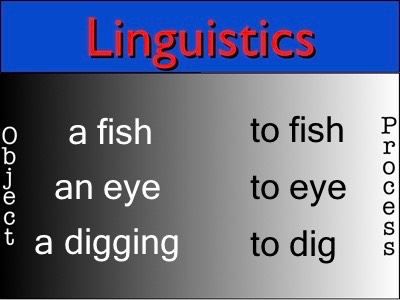
Yep, it works in linguistics, too. We have plenty of words that can flip back and forth between verb and noun. If you ever want to convert a verb into a noun, just attach the suffix “ing” to the end and voila, you’ve got a noun!
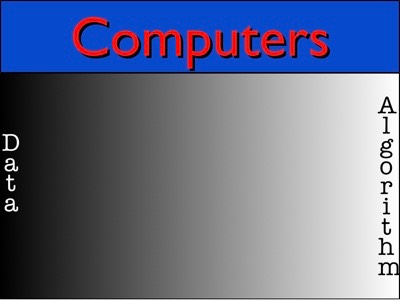
It works with computers, too, although you kids have it so easy these days that you wouldn’t know. The two poles of computer are data and algorithm. Nowadays, you have so much memory in your computer and such fast processors that you never worry about having enough space or enough computer power (measured in clock cycles) to do almost anything you want. But back in the bad old days, when we programmed with stone tools, everybody knew the tradeoff:
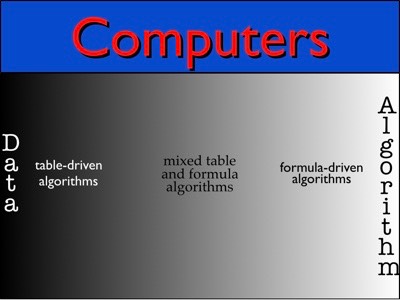
If you wanted speed and could sacrifice RAM, then you used table-driven algorithms. If you didn’t have enough RAM, you could sometimes substitute an algorithm to generate the data on the fly. It was all a matter of how much space and time you had in your computer.
So this all sounds pretty straightforward, right? Sometimes you think about problems in terms of Object, and sometimes you think in terms of Process, right?
Wrong!!!
The problem for humanity — and the opportunity for you — is that most people think about reality almost entirely in terms of Object, not Process. If you sorted people by their tendency to think in terms of Object or Process, you’d get something looking like this:
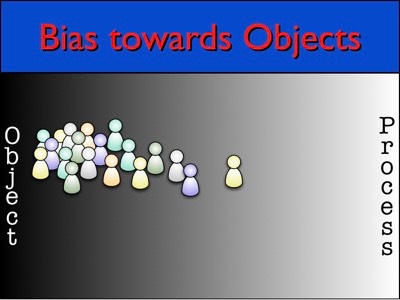
Most people are clustered way over on the Object side. There just aren’t many people who think in terms of Process. You don’t believe me? Just look at language:
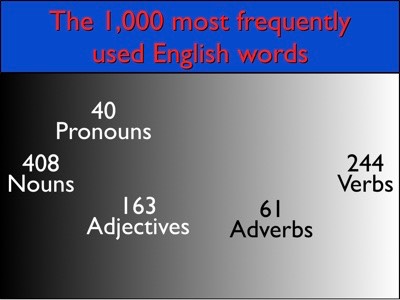
Of the 1,000 most frequently used words in the English language, fully 600 are words to describe Objects: nouns, pronouns, or the adjectives that describe them. Only about 300 words are used to describe Process: verbs and adverbs. We have twice as many words for Object as for Process! That should give you an idea of how biased our minds are.
This should come as no surprise if you think about how we sense the world around us:
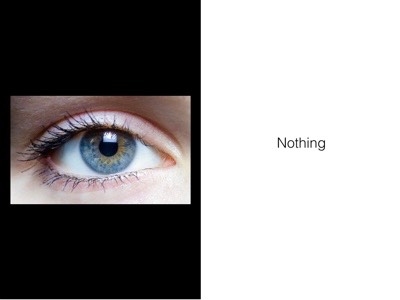
We have eyes to sense the objects around us. We have no sense organs that can directly perceive processes. Instead, we must infer processes from what we see and hear. This raises an interesting dimensional aspect of Object versus Process. Objects live in space where Processes live in time. An Object necessarily has length, width, and depth, while a Process has a duration. The former extends over space while the latter extends over time. I’m still trying to figure out what that means, especially in light of Special Relativity’s admixture of space and time.
Getting back to the subject, our visual process automatically breaks the visual scene up into objects. You cannot help but break this image down into Objects:
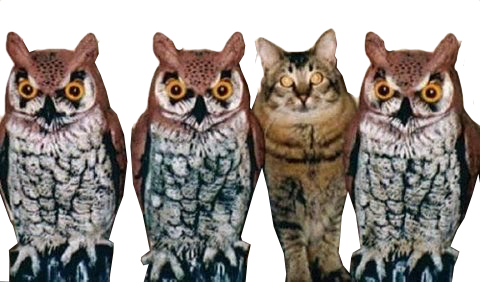
How can you get past this intrinsic bias against Process? How can you shift your thinking?
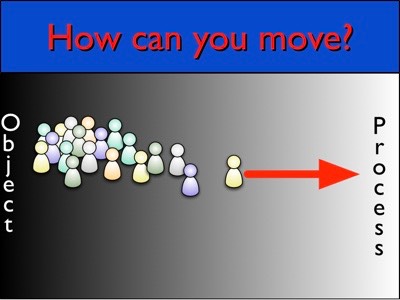
I have a number of suggestions for how to go about doing this. None are easy and one is downright unpleasant.
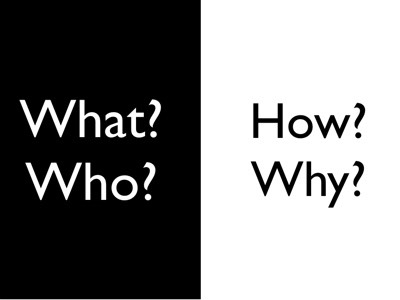
The first and easiest step is to refocus your curiosity. Don’t inquire into Objects; inquire into Processes. Don’t ask What-questions or Who-questions. Instead, ask how things work, or why they came to be the way they are. The answers to What/Who questions are merely words; they communicate nothing of significance. Look deeper! When you look, see with your mind, not just your eye.
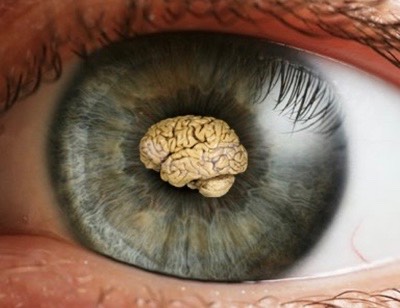
Let’s walk through some examples. When you look at a tree, what do you see? Do you see a collection of Objects, or a system of Processes?
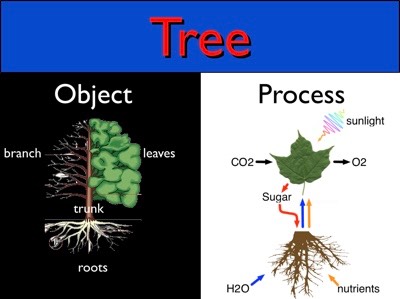
If all you see are branches, leaves, trunk, and roots, then you understand nothing. You must see with your mind. You must see water enriched with minerals entering the roots and slowly creeping up the trunk into the leaves, where it combines with carbon dioxide in chemical reactions driven by the energy of sunlight. Those chemical reactions ultimately produce sugars that help build more tree. If you see the tree as a system of processes, you see so much more than if you merely know the names of the parts.
Here’s another way of thinking about it. Look closely at this rock:
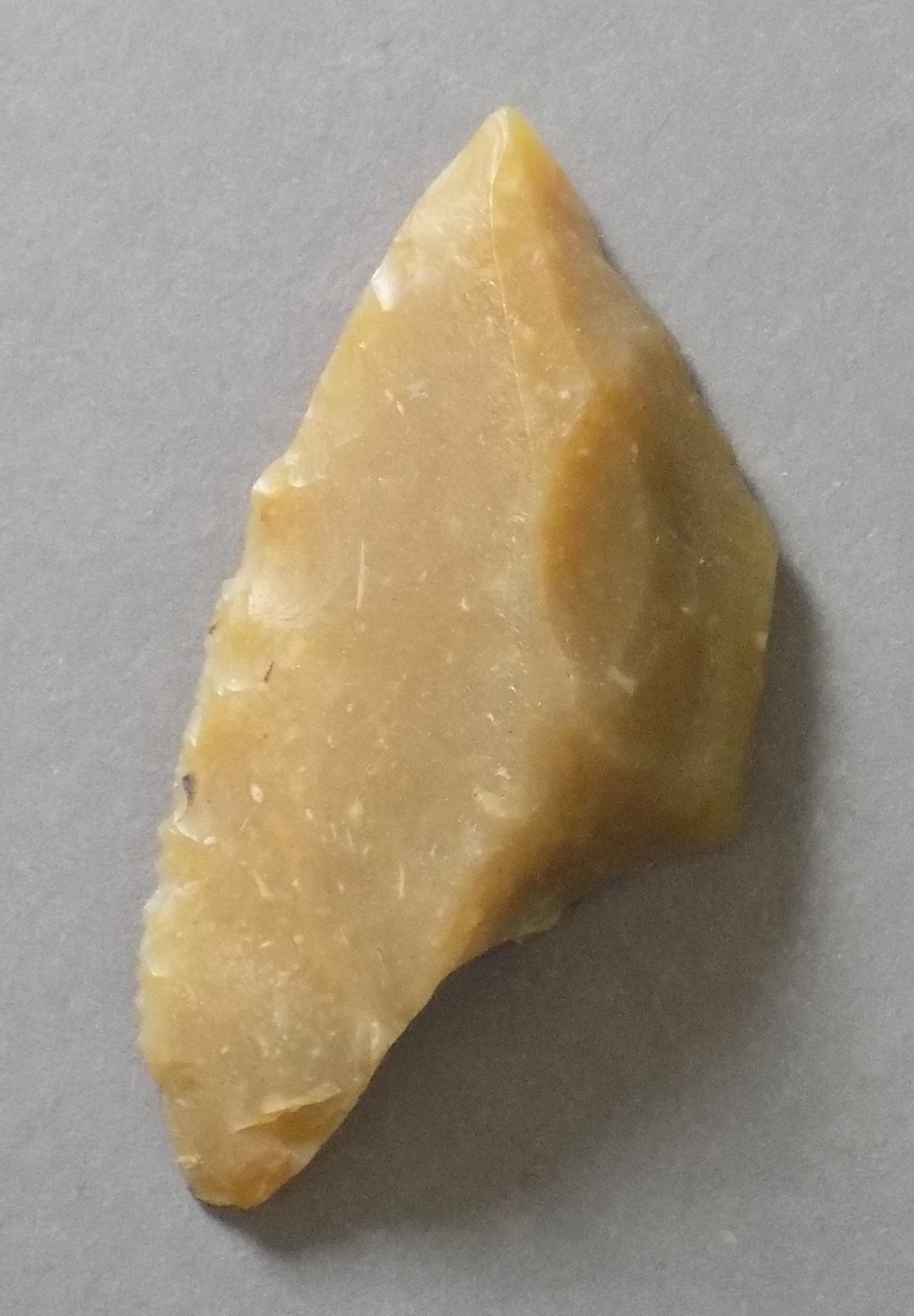
Doesn’t seem like much, does it. Just a tan rock. But now look at it with the lighting set to hilight one of its odd features:

Look closely at the left edge. Do you notice those semicircular marks along the left edge? If you think in terms of Object, then you’ll say, “So what? Semicircular marks. Big deal.” But if you think in terms of Process, then you’ll think, “Gee, I wonder what caused those semicircular marks?” You would note that there are no semicircular marks anywhere else on the rock. So you turn the rock over and examine the other side:
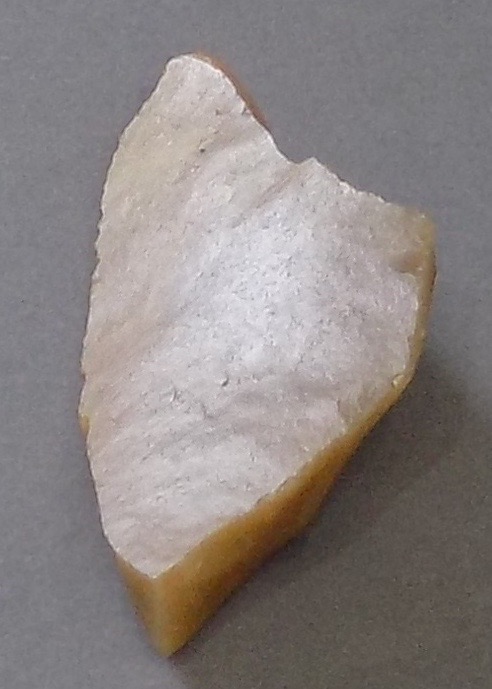
Gee, no semicircular marks anywhere here, either — not even on the left edge. On the other side of that edge there are plenty of semicircular marks, but not on this side. Again, you think in terms of Process and ask “Why would there be semicircular marks on one side but not the other side?” So then you look at it from a third angle and you see this:

This rock has a sharp edge, and the edge was made even sharper by the semicircular marks along one side of the edge. So now you ask, “What Process could have selectively sharpened this rock?” and the only possible answer is “A human being seeking to make a stone cutting tool.”
This is not just any old rock; this is a stone cutting tool hundreds of thousands of years old. And the realization of that truth comes only from thinking in terms of Process, not Object.
On to the next step in your understanding of Process. I begin by pointing out that every serious field of intellectual inquiry develops its own special language of expression:
Law: “Whereas the party of the first part…”
Physics: F = ma
Music: 🎶🎵
Cinema: Closeup, pan, zoom, fade...
It should come as no surprise, then, that Process has its own special language of expression — but you’re not going to like it. That language is

Mathematics!!!!!
I know. You hate mathematics. So do I — and I earned a master of science degree in physics! Let’s face it: math is just plain yucky (if you enjoy math, help is available.) Math does to your mind what yoga does to your body.

You will just have to take your medicine.

But you don’t have to deal with the worst parts of math: calculus, matrices, differential equations, group theory, statistical analysis, or any of that super-yucky stuff. You can do wonderful things with just everyday yucky stuff, the algebra you learned before you went to college. Trigonometry is probably the hardest thing you’ll need to use. Otherwise, it’s just stuff like this:
x = 4.23 * y +16
x = y^2 (y squared)
x = 2.1 - y/z
Yes, it’s still yucky, but it’s the kind of yucky that you can work with if you just hold your nose, because math is the only way you can truly understand Process.
“Why must I use math to understand Process?” you ask, hoping for some way out of this jam. “It didn’t take any math to understand the example with the stone tool; so why do I need math?” You need math to truly understand Process. Most processes ultimately involve quantitative relationships that you will never understand without math. Besides, if you want to use the computer creatively, you must speak its language. Far too many people are fecklessly fucking around with computers using only boolean processing (true or false). That’s like using an advanced jet fighter to taxi along the runway. Do you want to fly?
